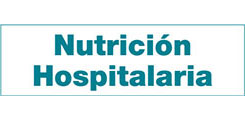Trabajo Original
Doble carga de malnutrición en escolares urbanos y rurales de guatemala
José Joaquín Muros, Mercedes Briones Urbano, Guillermo Rodríguez, Paula R. Bouzas, Rafael Giménez, Carmen Cabrera-vique
 Número de descargas:
77735
Número de descargas:
77735
 Número de visitas:
11288
Número de visitas:
11288
 Citas:
0
Citas:
0
Compártelo:
Introducción: Guatemala ha estado experimentando una transición en sus estilos de vida. Mientras que la desnutrición crónica sigue siendo prevalente, se ha experimentado un aumento sustancial de los casos de obesidad. Objetivo: proporcionar información actualizada sobre las nuevas tendencias en cuanto al estado nutricional en Guatemala. Métodos: se diseñó un estudio transversal con una muestra de 392 niños y adolescentes (5-18 años) seleccionados de manera aleatoria. El muestreo fue estratificado según su ubicación geográfica (rural y urbana), sexo y edad. Resultados: alrededor del 62% de la muestra urbana presentó problemas de sobrepeso y un 13,8 de obesidad. Entre los participantes urbanos, la prevalencia de sobrepeso/obesidad fue mayor en el grupo de 11-14 años. El grupo urbano presentó una mayor prevalencia de sobrepeso/obesidad que el grupo rural para todos los grupos de edad (excepto en el grupo de 15-18 años que presentó unos índices de obesidad ligeramente más elevados en el grupo rural). Se observó una mayor prevalencia de retraso en el crecimiento en el grupo rural, excepto para el grupo de edad de 15-18 años. La prevalencia de bajo peso fue significativamente mayor en el grupo rural (25% vs. 1,2%) así como la prevalencia del delgadez, excepto para el grupo de edad de 5-10 años. Conclusión: la alta prevalencia de bajo peso y la de sobrepeso/obesidad coexisten en los niños y adolescentes en Guatemala.
Palabras Clave:
DOI: 10.1016/j.ehb.2011.08.002
DOI: 10.1016/j.healthplace.2006.01.004
DOI: 10.1017/S1368980007001231
DOI: 10.1111/j.1753-4887.2011.00456.x
DOI: 10.1177/156482650502600205
DOI: 10.2471/BLT.07.043497
DOI: 10.3945/jn.108.098343
DOI: 10.3945/ajcn.2010.29786
DOI: 10.1093/ajcn/72.4.1032
DOI: 10.1001/archpedi.157.8.821
DOI: 10.1542/peds.105.3.671
DOI: 10.1079/PHN2001291
DOI: 10.1038/sj.ejcn.1602558
DOI: 10.1186/1471-2458-10-158
DOI: 10.1079/PHN2005786
DOI: 10.1093/ajcn/75.6.971
Artículos más populares
Revisión: Inteligencia artificial generativa ChatGPT en nutrición clínica: avances y desafíos
ChatGPT y otras herramientas de inteligencia artif...
Revisión: Suplementación con micronutrientes y sus beneficios: ¿por qué y cuándo?
Introducción: los micronutrientes participan en la...
-
Licencia creative commons: Open Access bajo la licencia Creative Commons 4.0 CC BY-NC-SA
https://creativecommons.org/licenses/by-nc-sa/4.0/legalcode




